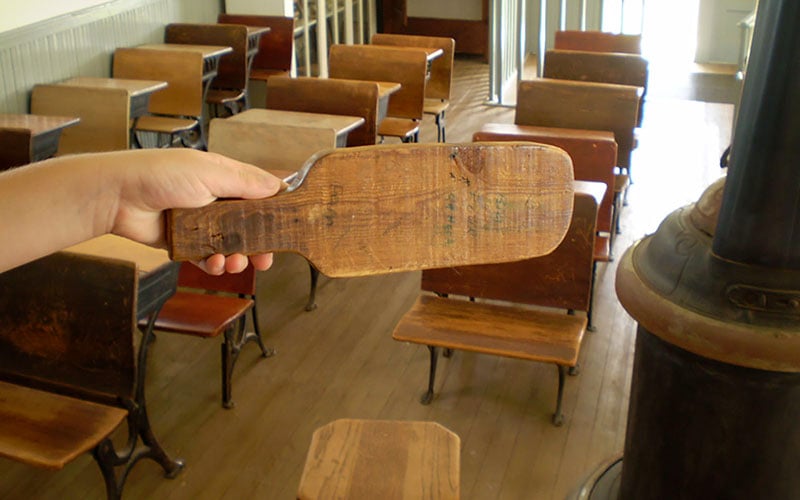
The days of paddling in schools are largely a thing of the past, but Arizona officials said they still think local districts should be allowed to decide whether to allow corporal punishment. (Photo by Wesley Fryer/Creative Commons)
WASHINGTON – Arizona is one of 15 states that expressly allow corporal punishment in schools, but state educators said most schools already heed the spirit of U.S. Education Secretary John King’s call for an end to the practice.
In an open letter Tuesday to “governors and chief state school officers,” King said physical punishment is “harmful to students” and he urged them to stop the practice in their states.
“Corporal punishment … teaches students that physical force is an acceptable means of solving problems, undermining efforts to promote nonviolent techniques for conflict resolution,” King wrote.
Even though Arizona allows the practice statewide, most local school districts have banned corporal punishment in their own schools, according to organizations representing school boards and school administrators in the state, which have promulgated a model policy against “the threat or use of physical force” on students.
“The majority or close to 100 percent of school districts do not allow (corporal punishment) and have adopted the policy,” said Arizona School Boards Association spokeswoman Heidi Vega in an email Tuesday.
The official policy states that “the threat or use of physical force is not justified in response to verbal provocation alone,” and differentiates between school employees using physical force as self-defense and as punishment.
The Arizona Department of Education does not plan to ask the Legislature to overturn the current law that allows corporal punishment because, “We’re not here to tell our schools what to do one way or another,” said Charles Tack, a department spokesman.
“This comes down to what the people of Arizona want to see in their communities and their schools,” said Tack, adding that Superintendent Diane Douglas strongly advocates for local control.
The decision by local districts to restrict corporal punishment makes it rare in the state. The most recent federal data showed that in the 2011-2012 school year, there were 601 cases of physical punishment doled out to the just over 1 million students enrolled in Arizona public schools.
Compared to Mississippi where 31,236 cases of corporal punishment were reported or Texas with 28,569 in the same period, Arizona had relatively few cases. “But one student is too much,” said Harry Lawson, director of human and civil rights at the National Education Association.
“The research clearly shows negative academic and health impacts when this punishment is the form of discipline,” Lawson said. “And children of color receive this punishment at disparaging rates that makes the playing field even more unequal.”
This held true for students in Arizona: The federal data showed that 34.8 percent of all students punished in 2011-12 were Native American, despite the fact that they made up only 4.8 percent of the general student population.
“Disparities in the use of in-school corporal punishment are not limited to race; boys and students with disabilities experience higher rates of corporal punishment,” King wrote, noting that these disparities could violate federal anti-discrimination laws.
King did not propose federal action, saying it was up to states to tackle the problem. In addition to the 15 states that have explicit language allowing corporal punishment in schools, seven don’t have any law banning it and the rest prohibit the practice.
Although Arizona officials don’t think changing state law will be on the table when the Legislature convenes in January, districts are taking their own steps to end the practice.
“The Arizona School Administrators strongly opposes any use of corporal punishment by its schools and districts,” said Mark Joraanstad, the group’s director. “Corporal punishment destroys the culture of caring necessary for student learning and family engagement.”